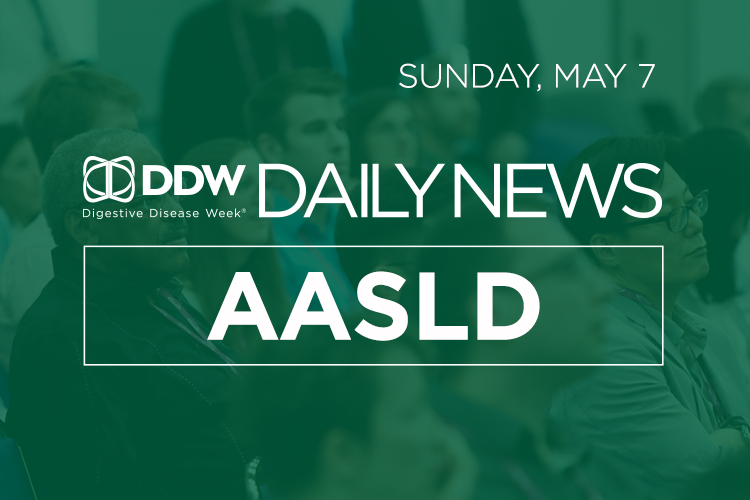Six cutting-edge abstracts will be presented during Sunday afternoon’s AASLD Plenary Session, which will be moderated by AASLD President Anna S. Lok, MD, FAASLD, and AASLD Secretary Kimberly A. Brown, MD, FAASLD.

“We work very hard to select topics that are either currently controversial or at the edge of clinical science,” said Dr. Brown, chief of the division of gastroenterology and hepatology at Henry Ford Health System, Detroit, MI. “We try to select presentations that are going to move the field forward or have added information to the knowledge base.”
The first abstract to be presented examined the impact of Share 35 on waitlist outcomes in candidates with Model for End-Stage Liver Disease (MELD) scores greater than 40.
The next abstract analyzed the risk of hepatocellular cancer in U.S. patients treated with direct-acting antiviral agents. New oral agents allow clinicians to treat very advanced liver disease patients, including many who have cancer. In the past, the side-effect profile of the drugs prevented that.
“There was early concern that in patients who were treated with these agents, their risk of developing cancer actually went up,” Dr. Brown said. “There have been data sets presented on both sides of the argument. I think most of us are coming down on the side with larger databases that there is not a significant risk, and that’s what this abstract addresses.”
The next abstract looks at primary sclerosing cholangitis (PSC) with and without associated IBD using data from the Pediatric PSC Consortium. “This is a large consortium that allows us to get more longitudinal data on disease states,” Dr. Brown said. “This study looks specifically at the association of inflammatory bowel disease in PSC in children and overall outcomes.”
Another abstract looks at data on acute-on-chronic liver failure from the North American Consortium for the Study of End-Stage Liver Disease. Morbidity and mortality are very high in this patient population.
“This study presents a model that predicts overall mortality in this population, which may help us clinically decide whether these are patients who should move toward transplantation or determine how they would be best managed,” Dr. Brown said.
Another study used the Icelandic genealogical database to define multigenerational risks of developing primary biliary cholangitis (PBC), specifically looking at familiar risk in relatives of patients with PBC.
The final presentation comes from phase 2 of the Magellan-1 clinical study of the use of glecaprevir and pibrentasvir for 12 or 16 weeks in patients with chronic hepatitis C with genotype 1 to 4 and prior direct-acting antiviral (DAA) treatment failure.
“There is a small but growing group of individuals who have been exposed to direct-acting viral drugs and who are now resistant. This study looks at salvage for those patients,” said Dr. Brown, who noted that the study’s results will impact clinical practice sooner rather than later.
Please refer to the DDW Mobile App or the Program section in Sunday’s DDW Daily News for additional details on this and other DDW® events.



